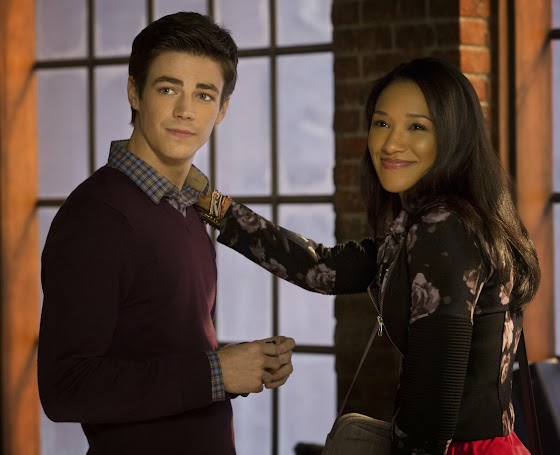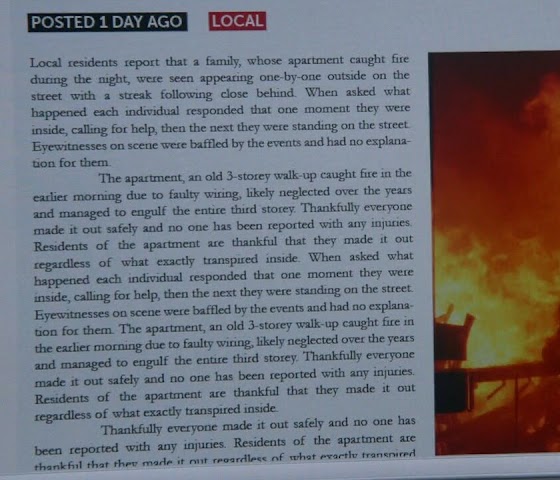Saturday, 18 March 2017
TV Series: The Flash
This afternoon I watched the first three episodes of the DC television series, "The Flash". Yes, I know I'm two years late. I never watch television as it's broadcast live. Most of the stuff that's broadcast is junk, so when I lived in England I didn't even have a television license. In Germany the law is different, unfortunately. Every household must pay for a television license, whether they own a television or not. There have been numerous court cases by people who think this is unfair, but none have succeeded.
For those of you who don't know much about the character, apart from what they've seen on television, the Flash is a character who first appeared in DC Comics in Showcase #4 in October 1956. This was an anthology comic which featured different characters each month as a trial. The more popular characters, based on the response from reader letters, were given their own comic. The Flash was featured in another three issues of Showcase, issues #8, #13 and #14. Finally he was given his own comic in March 1959 which ran for 26 years, until October 1985. The comic was cancelled due to his death in a storyline, but as all fans of Marvel and DC comics know, "Nobody stays dead except for Uncle Ben", so he came back to life in 2009. Some guys have all the luck.
Some comic fans are probably shouting at me to tell me that the Flash started much earlier, in Flash Comics #1 in January 1940. Yes and No. There was a character called the Flash who appeared for 104 issues of Flash Comics from 1940 to 1949, but it was a different Flash. He was a college student called Jay Garrick. The character who was introduced in 1956 was a police forensic expert called Barry Allen, a man who liked to read comics about Jay Garrick, the Flash.
After being struck by lightning Barry Allen adopted the name of the hero in the comics he loved so much, and he even based his costume on the comic. What he didn't know is that the character in the comics really existed. The author of the comics, Gardner Fox, claimed to have written stories that he dreamt about. In actual fact he was having visions of a parallel universe. A few years later (in Flash issue #123, September 1961) Barry accidentally travelled to this other world and met his hero. Over the following years there were other meetings between the two Flashes.
That's an interesting plot device, something I like about the story. In the comic someone reads a comic about a person he considers to be fictional, but is actually real. This provokes the question whether the comics that we read today are real or not. It's the opposite scenario to "The Matrix". In "The Matrix" it's suggested that there's a world outside of the one we live in. In the Flash comics it's suggested that there's another world inside our world.
Barry Allen was blond in the comics. A notably large percentage of the male heroes in the 1950's and 1960's comics had blond, bright yellow hair. I'm not sure why this was. Maybe it was a beauty ideal of the time. Maybe it was just because it was easier to draw. On a side note, it was customary for comics to draw black-haired people with blue hair, to avoid a black splodge of ink on the page. Blue looked like black on casual reading.
Ginger hair was also very common in the comics of the 1950's and 1960's, also intended to give a contrast between the characters. Barry Allen's girlfriend, Iris West, was ginger. It's a shame that she's fallen victim to the modern racist policy of making one major comic book character in each film and TV series black.
Yet another case of miscasting by studio executives who have no respect for the original comics. Barry should be blond, Iris should be ginger.
That brings me up to the current series, of which I've now watched the first three episodes. The series has a different feeling to the comics. Barry Allen is a forensic scientist, like in the comics, but he seems to be younger. His age isn't explicitly stated, neither in the comics nor the TV series, but in the comics he was very much an adult. If I had to peg his age I'd estimate he was about 30. In the series Barry Allen is played by Grant Gustin, who was 23 when the series began, but he looks and acts younger. I assume he's intended to be a college graduate at the beginning of his career, which would make him at least 21, but he looks and acts like a teenager. In his voice-overs he sounds like a clone of Tobey Maguire as Spider-Man.
The TV series tones down the silliness that I hated in the early DC comics. In the series his speed is top speed is measured at 347 miles per hour. Maybe he gets faster in later episodes, I'll see when I get to them. In the comics he breaks the sound barrier in his first adventure, within two days of gaining his powers. which would mean he was running at 767 miles per hour. In his second adventure he ran faster than the speed of light, so fast that he could break the time barrier and run forwards and backwards through time.
I jumped for joy when I saw that John Wesley Shipp plays the part of Barry's father, Henry Allen. I wasn't expecting to see him. He played Barry Allen in the previous Flash television series in 1990. As I remember, it wasn't as good as the new series as far as the special effects were concerned, but it had some very good stories. I need to watch it again.
But you have to admit that John Wesley Shipp's costume was closer to the original than Grant Gustin's costume. Why do they have to change everything? It's not right. Rather than invent new costumes for super-heroes the producers should look at the comics and try to copy the old costumes as closely as possible.
Before I finish, I'd like to point out that two newspaper reports were shown on computer screens in the second episode. Both articles are a shambles. The same texts are repeated over and over again. If you don't believe me, you can click on the following screenshots to enlarge them. That's so sloppy.
Subscribe to:
Post Comments (Atom)










No comments:
Post a Comment
Tick the box "Notify me" to receive notification of replies.